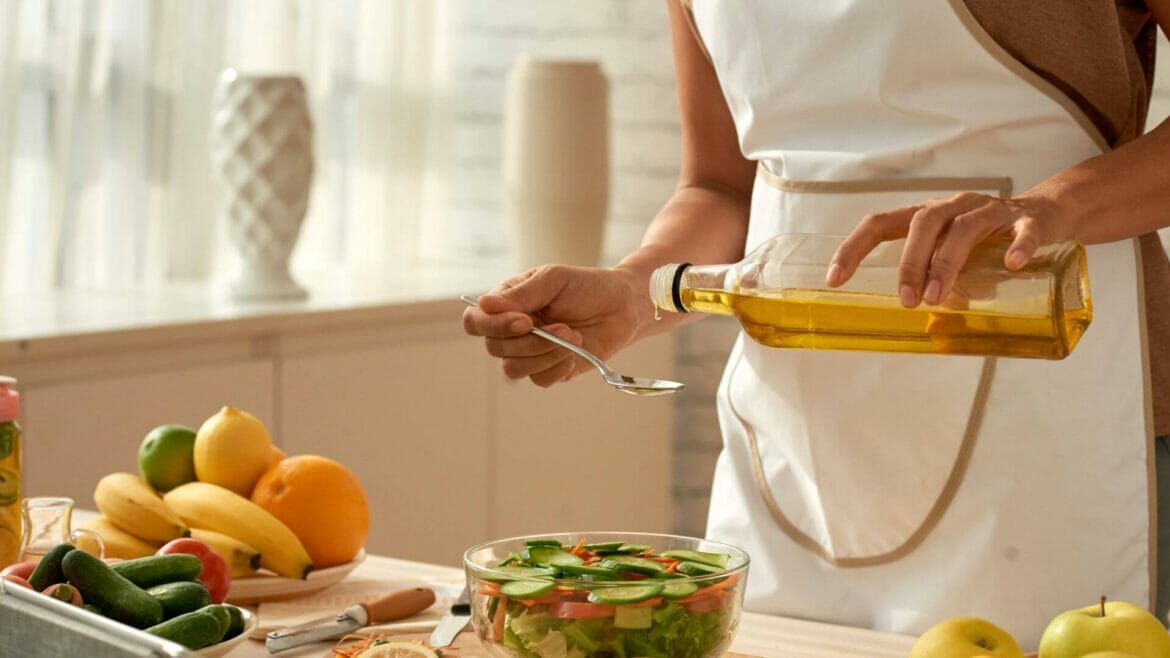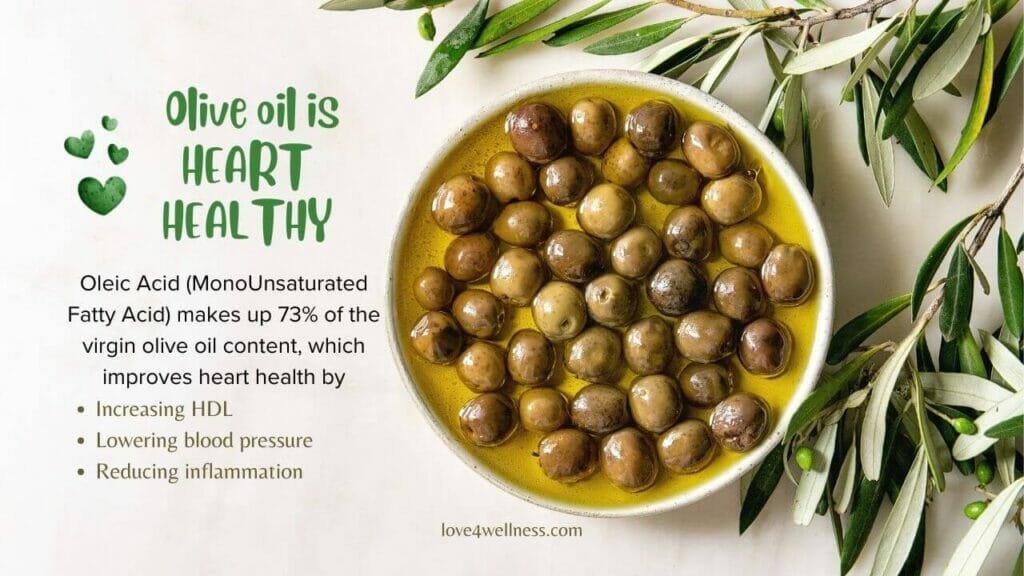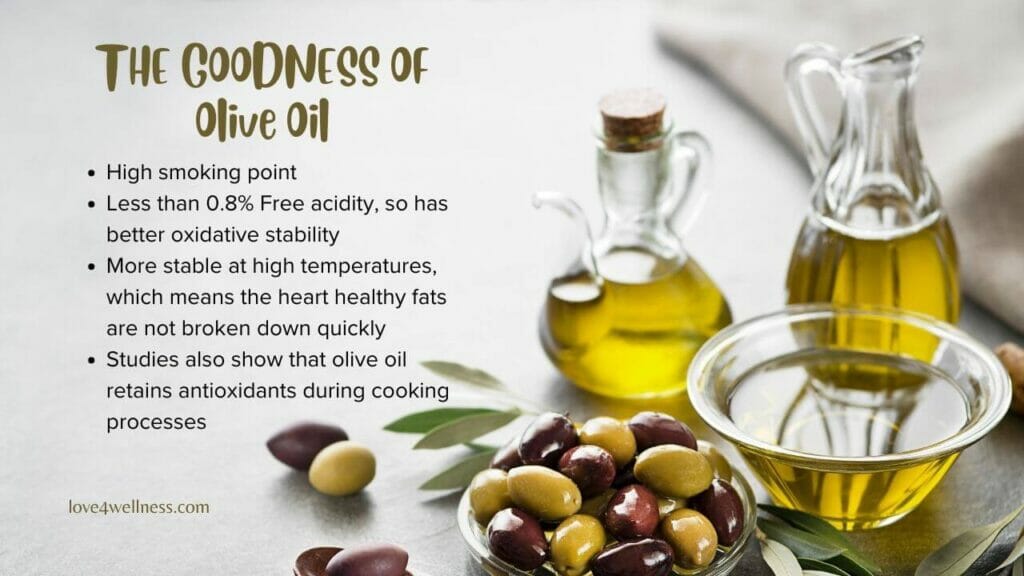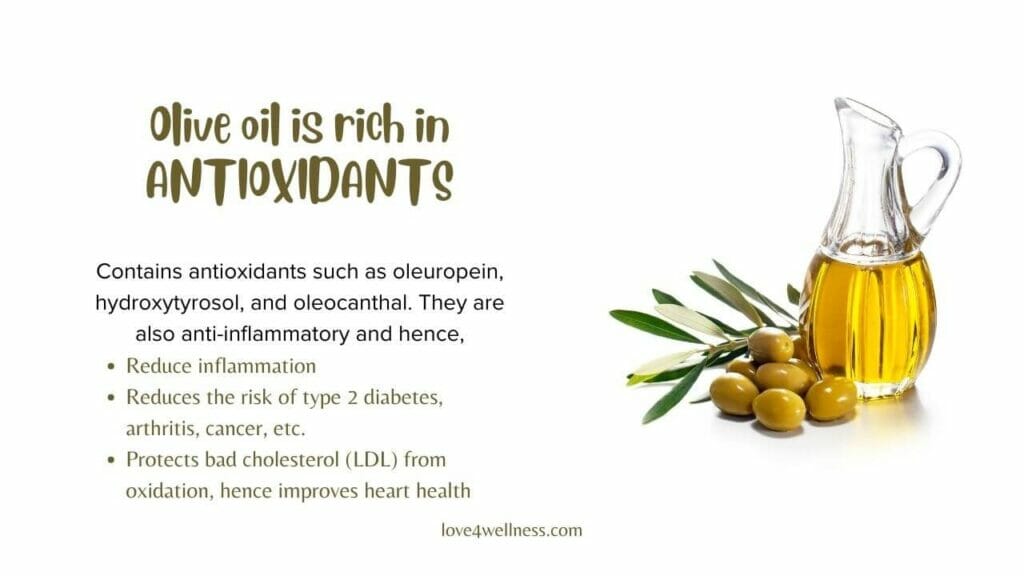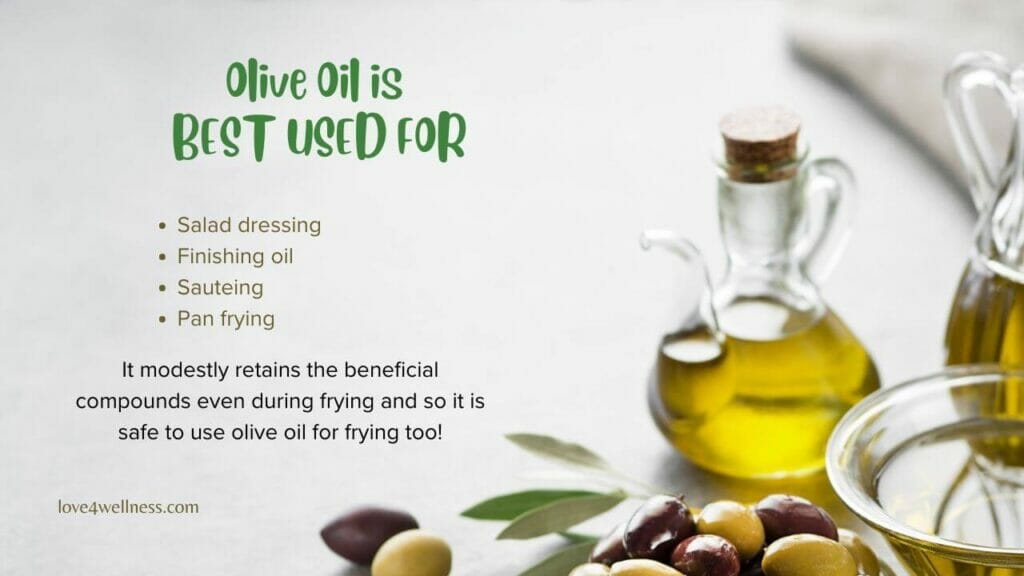Olive oil has long been considered the king of cooking oils, and for a good reason. With its rich flavour, versatility in cooking, and numerous health benefits, it is a staple in many kitchens worldwide. In this article, we will explore why olive oil is a superior choice when it comes to cooking oils. We will also discuss its nutritional profile, including the types of fats it contains and the health benefits associated with them. We will also delve into the science behind why olive oil is a better option for cooking at high temperatures compared to other oils. Additionally, we will provide tips on selecting the best quality olive oil and using it in various recipes to enhance their flavour and nutrition. So whether you’re a seasoned chef or a beginner cook, read on to discover why olive oil reigns supreme in the world of cooking oils.
Olive oil – Nutritional profile
When we talk of cooking oils, the only nutrient we think of is fats. However, the nutrient profile of olive oil does not end there. Olive oil is also rich in antioxidants, has anti-inflammatory compounds, and vitamins E and K.
Nutrients in olive oil:
- About 73% is MUFA (Monounsaturated Fatty Acids), predominantly Oleic acid (Omega-9 fatty acids).
- The rest 14% is saturated fat, and 11% is PUFA (Polyunsaturated Fatty Acids, such as Omega-6 and Omega-3 fatty acids)
- It also has powerful antioxidants such as Oleuropein and Hydroxytyrosol.
- It contains Oleocanthal, a beneficial compound with excellent anti-inflammatory properties.
- A tbsp of olive oil contains about 13% Recommended daily amounts of vitamin E and about 7% RDA of vitamin K.
What are fats, and why are they important?
Fats are an essential component of our diet and play a crucial role in our overall health and well-being. They are a major source of energy, help absorb vitamins and minerals, and are involved in various metabolic processes in our body. However, not all fats are created equal; some are better for our health than others.
Types of fats in cooking oils
Cooking oils are triglyceride molecules. Each molecule contains three fatty acid chains linked to glycerol.
The fatty acids are of three types – Saturated, Polyunsaturated (PUFA), and Monounsaturated fatty acids (MUFA). MUFA’s chemical structure has one double bond, PUFA contains more than one double bond, and saturated fatty acids have no double bond and only single bonds.
Unsaturated fats do more good than harm to your body; among the three, PUFA and MUFA are good fats. Saturated fats are a good energy source for the body, but consuming them in moderate amounts is important as too much consumption may increase the risk of heart disease.
Why is olive oil a good choice for cooking?
The smoking point is one of the key parameters in evaluating the health value of cooking oil.
Also Read: A Detailed Account On Free Acidity And Smoke Point Of Cooking Oils
Cooking oils get unstable beyond smoke points. So when using cooking oils beyond the smoke point, the fat molecules break into free fatty acids. In addition, the oil may lose its antioxidant properties at high temperatures.
In addition, some products formed are harmful to health, such as carcinogens, which is a concern when using cooking oils beyond their smoke points.
Many studies prove olive oil does not break down into harmful compounds at high temperatures. Further, they found the healthy fats of olive oil are retained even when used in cooking beyond its smoking point.
Furthermore, when heated to high temperatures, olive oil does not lose its antioxidant and anti-inflammatory properties and does not break down into harmful compounds.
Hence, using olive oil at high temperatures is healthy and safe.
Types of olive oil
Olive oil is produced either through a purely mechanical process or with the help of certain chemicals and heat. Therefore, the quality of the oil varies with the production method.
The quality, flavour and colour also depend on whether the olives used were picked young or mature, are green or black, and the region grew in.
There are three types of olive oil: Extra Virgin, Virgin, and Refined/Light olive oil.
Extra Virgin Olive Oil
EVOO is the highest grade of all types, the most expensive, and the most flavourful. It is made from cold-pressed olives – no chemicals, heat or other processes are used. In addition, EVOO has no more than 0.8 per cent free acidity or Free Fatty Acids (FFA).
** Free acidity is one of the important attributes classifying olive oil as Extra Virgin and Virgin.
The unique benefits of EVOO
- EVOO is the olive oil with the most goodness. It has the greatest percentage of oleic acid (healthy fat that can lower blood pressure and cholesterol and increase HDL) – between 70 and 85%.
- Because it is unrefined and cold-pressed, it retains most bioactive compounds found in olives, including oleuropein, hydroxytyrosol, and oleocanthal, which possess antioxidant, anti-inflammatory, and antimicrobial properties.
The colour ranges from green to a golden hue, and the aroma is from fresh and herbs-like to ripe and fruity. EVOO tastes bold and peppery though it is possible to make them with a milder taste yet flavourful.
Smoking point
EVOO has a high smoke point – 190°C to 207°C (350 to 410 F). Also, as discussed earlier in this article, olive oil retains most of its beneficial compounds even when used beyond the smoke point.
Best used for salad dressing and finishing oil to savour the superior taste and unique aroma. Also used for Sauteing, Stir-frying, Baking, and Marinating. Though you can use EVOO for deep frying (170 – 190°C), considering the cost and losing the distinct aroma, you better not do it.
Shelf life
It has a shelf life of 18-24 months from the date of manufacture. However, after opening the bottle, it is best to use it within two months, after which the oil may lose its aroma and taste. Also, when exposed to light, heat and air, the oil goes rancid quickly. So, let the EVOO bottles be inside your cabinet, safely away from the light and heat. Storing in the refrigerator may give it a cloudy look, though it is perfectly alright if you wish to do so.
Virgin Olive Oil
No chemical solvents or heat is used during the production of Virgin olive oil. Virgin olive oil is also high in healthy fats (with a slightly lesser percentage), naturally occurring antioxidants, and vitamins E and K, thus giving you many health benefits. However, virgin olive oil is slightly less superior than EVOO, with free acidity between 0.8 and 2% and mild aroma defects.
Though virgin olive oil lacks the distinctive flavour of EVOO, the smoke point is almost the same range. The shelf life too is similar to that of EVOO.
So, ideally, you can use virgin olive oil in cooking methods similar to EVOO.
Refined olive oil, also called the light olive oil
Heat is used to remove aromatic impurities and free fatty acids to increase the shelf life. It is light yellow in colour, has a neutral flavour, and contains fewer healthy fats and antioxidants. However, the oil does contain impressive amounts of phytosterols and vitamins K and E. It has a higher smoking point than unrefined virgin olive oils and is less expensive too. Since it has a neutral flavour, this oil better suits deep frying than salad dressing.
The shelf life is 18 to 24 months, like virgin olive oil. However, the oil does not go rancid as quickly as the pure varieties after opening the bottle.
Which type best suits you?
It is wise to stock both extra virgin and refined olive oil for cooking and use according to the cooking method.
For example, using EVOO as salad dressing and finishing oil is best because the flavour is intact. Virgin olive oil can be used if your dish needs a few minutes of heat, such as stir-frying and sauteing.
Refined olive oil is best for deep frying and recipes with more cooking time.
Ways to use olive oil
- Salad dressing: Mix extra virgin olive oil with lemon juice, salt, and pepper to create a simple and healthy salad dressing.
- Pan frying: Virgin olive oil is great for pan-frying or sautéing vegetables, meats, or seafood. Its high smoke point makes it ideal for high-heat cooking.
- Roasting: Refined olive oil can be used to lightly coat vegetables, meat, or fish before roasting in the oven. It helps to keep the food moist and tender while it cooks.
- Grilling: Use a brush to brush refined olive oil over food before grilling to prevent sticking and add flavour.
- Baking: Refined olive oil can be used as a substitute for butter in many baking recipes. Try using it in cakes, bread, and other baked goods for a healthier option.
- Pasta dishes: Use virgin olive oil to lightly coat pasta and vegetables in pasta dishes. It adds flavour and helps to prevent the pasta from sticking together.
- Marinating: Virgin olive oil is a great ingredient for marinades. Mix with lemon juice, herbs, and spices to create a marinade for meat or seafood.
The bottom line
In cooking oils, olive oil is hailed high due to its numerous health benefits and versatility in cooking. For example, olive oil is a rich source of monounsaturated fatty acids, which have been linked to reducing the risk of heart disease, diabetes, and certain cancers. Additionally, it is a good source of antioxidants, such as vitamin E and polyphenols, which help protect against inflammation and oxidative stress.
Olive oil is also a great option for cooking due to its high smoke point and ability to retain beneficial compounds and not release harmful compounds at high temperatures. In addition, its subtle and versatile flavour makes it a perfect addition to various dishes, from sautéing vegetables to dressing salads. Overall, olive oil is a healthy and delicious addition to any kitchen, and its many benefits make it a top choice among cooking oils.
Images: canva.com
